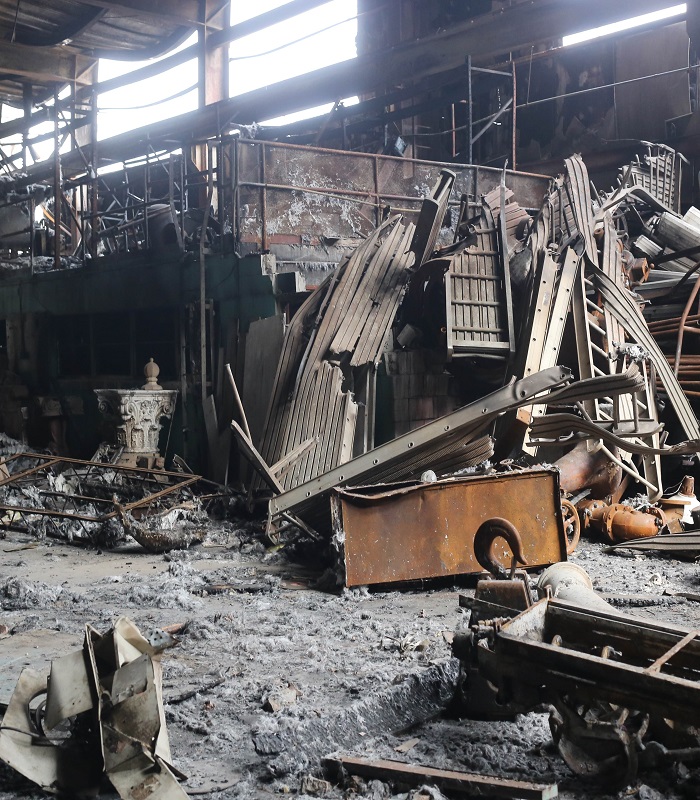Over the years a large part of our work has included working for organisations such as the Environment Agency, the NHS and Fire Brigade.

Our Environment Agency work has seen us undertaking surveys of the Thames Barrier, sluices and locks in the middle of nowhere, riverbanks and sea walls and areas along the Thames only accessible by boat.
We work at NHS Trusts across Sussex, East Anglia, Hampshire, London and South and Mid Wales and surveys have included the surveying of a single operating theatre, through to full-scale demolition.

We have undertaken several hundred surveys within fire stations prior to refurbishment, some of which consisted of 1,000+ samples, all undertaken whilst taking into consideration the surveys could not disrupt the day-to-day running of the stations.
FAQs
What are the regulations for asbestos removal in government buildings?
Government buildings are subject to the same asbestos regulations as all other buildings in the UK, those being The Control of Asbestos Regulations 2012 (CAR 2012). Asbestos removal must be undertaken in accordance with HSG247 Asbestos: The licensed contractors’ guide and the Health & Safety Executives Approved Code Of Practice (ACOP).
How is asbestos identified in government buildings?
An Asbestos Management Survey is undertaken to locate and assess the condition of asbestos containing materials. A management survey is adequate for the purposes of normal day-to-day activity but if work is to take place, then a Refurbishment or Demolition Survey will be required.
Who is responsible for asbestos removal in government buildings?
The building owner or manager is typically responsible for ensuring that asbestos is safely removed from government buildings.
How is asbestos removed from government buildings?
Certain asbestos materials must be removed by a Licensed Asbestos Removal Contractor (LARC) who will work in accordance with HSG247 Asbestos: The licensed contractors’ guide. For materials which do not have to be removed by a LARC, it is still essential that remedial works or removal takes place in accordance with the Health & Safety Executives Approved Code Of Practice (ACOP) and that suitable training has been undertaken. Removal work will often require air testing by an independent UKAS accredited company.
Is it safe to occupy a government building during asbestos removal?
Asbestos removal is undertaken under controlled conditions, and whilst access to the specific areas where asbestos removal is taking place will not be permitted, it is safe and perfectly acceptable for areas outside the work area to be used as normal.
What are the risks associated with asbestos exposure in government buildings?
As with all buildings, asbestos exposure can cause serious health problems such as lung cancer, mesothelioma, and asbestosis.
How can government buildings be protected from asbestos exposure?
As is the case with all commercial buildings, asbestos exposure can be prevented by having an asbestos management plan in place. The management plan will include having an asbestos survey undertaken in order that the location and condition of asbestos can be identified, undertaking asbestos reinspections at regular intervals to continue to assess the condition of asbestos and undertaking asbestos removal when required.
What are the costs associated with asbestos removal in government buildings?
The costs associated with asbestos removal from government buildings will be the same as those for any other building. Cost will be dependent on the type and extent of the asbestos containing materials being removed, combined with the complexity of undertaking the work.
Is it mandatory for government buildings to conduct regular asbestos surveys?
Yes, asbestos reinspection surveys must be undertaken as per the recommended intervals set out within the original management survey. If no asbestos was identified in the original management survey, then new surveys only need to be undertaken if it is to areas which could not be surveyed at the time of the original survey or if refurbishment or demolition surveys need to be undertaken prior to works being undertaken. A refurbishment or demolition survey still needs to be undertaken even if no asbestos was identified in the management survey, as the former are far more intrusive.
Is it possible to encapsulate asbestos instead of removing it?
Yes, encapsulation or sealing of materials may be used instead of removal but may still need to be undertaken by a Licensed Asbestos Removal Contractor.
